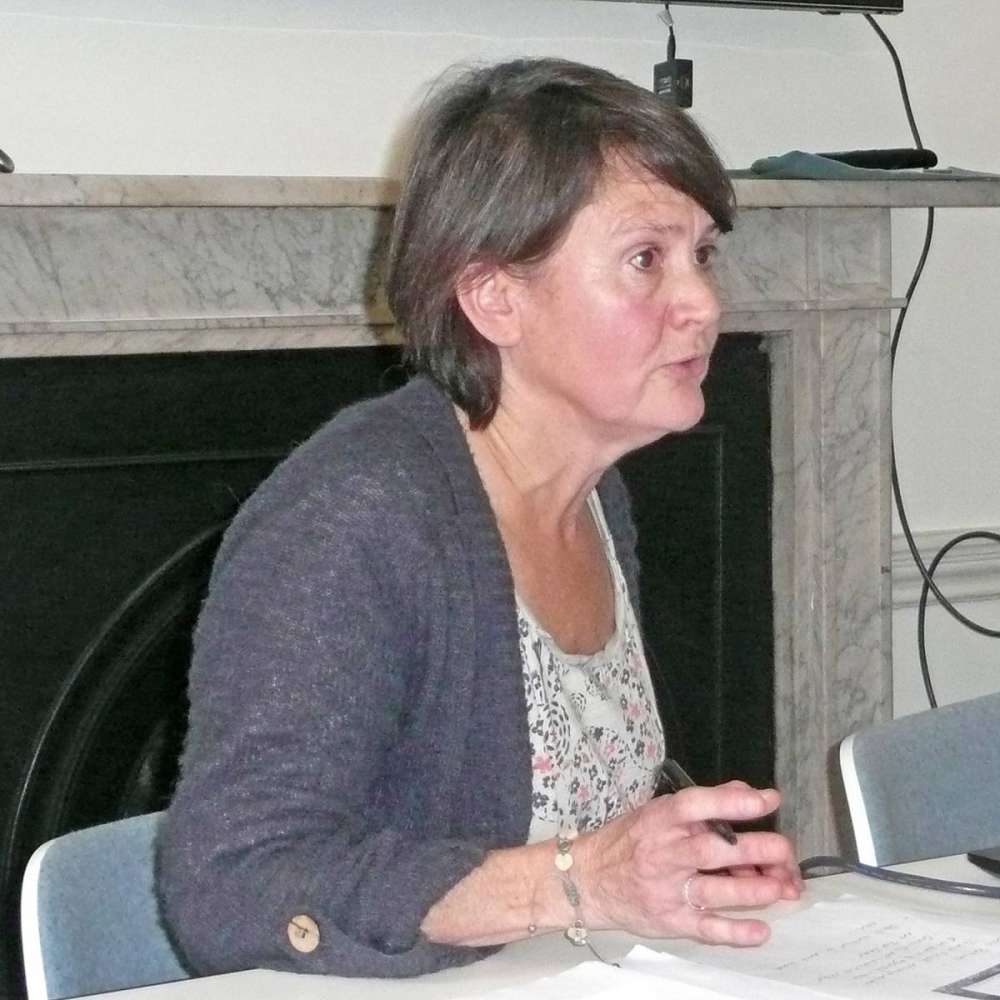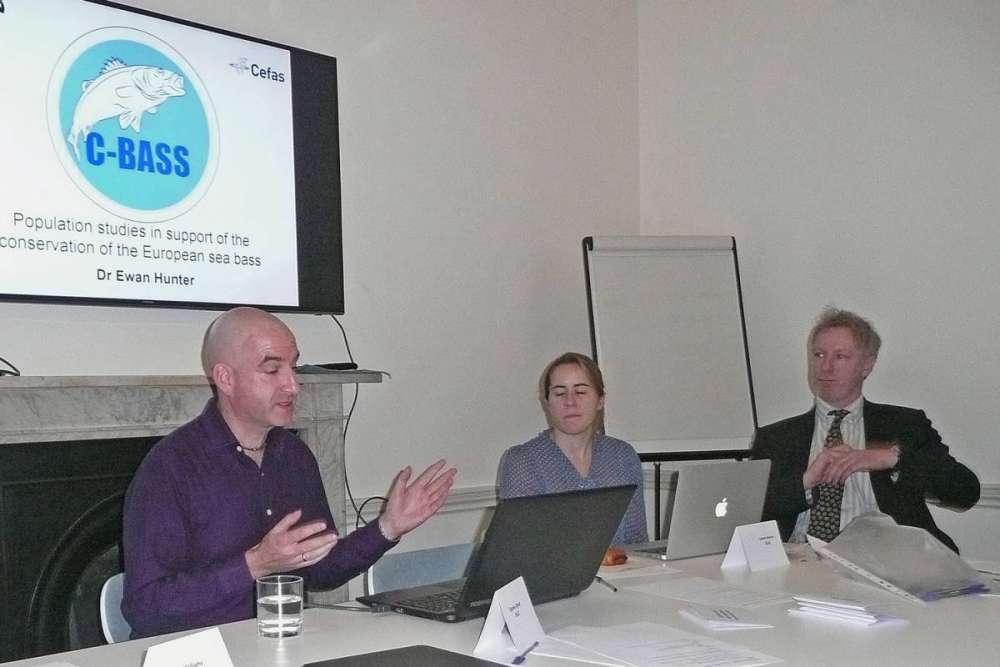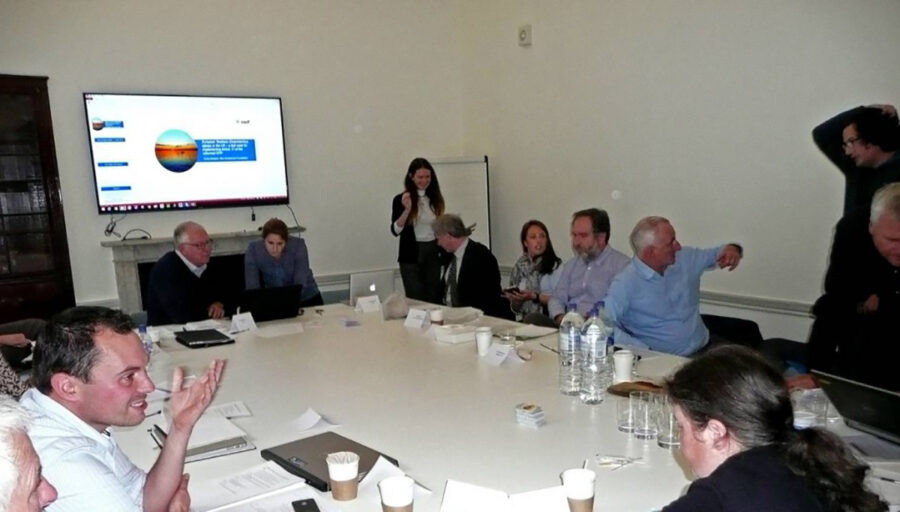Marine conservation group Blue Marine hosted a workshop in London earlier this month to try to form an action plan for EU bass management, reports Tim Oliver.
Above: Representatives from a wide range of organisations and interests attended the bass workshop.
Blue Marine believes bass stocks are in crisis and that conservation is not being adequately addressed. The aim of the workshop was to draw up a long-term action plan to halt the decline in the stocks and ensure they are rebuilt and fished sustainably in the future.
It was held on the same day the Brussels announced tough new proposals for bass fisheries in 2016, including a ban on commercial and recreational fishing during the first six months of next year (Fishing News, 19 November ‘Bass Bombshell’). Blue Marine said the Commission’s measures have been proposed in response to research showing the quantity of bass of breeding age had more than halved since 2010, from 16,000t to less than 7,000t. The proposals have to be approved at the December Fisheries Council but were considered “unfit for purpose by many attendees of Blue Marine’s workshop”, said Blue Marine.
The conclusions of the meeting, which included representatives from the smallscale commercial fishing industry in the UK and Europe, as well as recreational sea anglers, reflected “unprecedented agreement as to the way bass should be managed over the next 15 years” said Blue Marine after the meeting. (See Fishing News, 19 November ‘Bass workshop looks ahead’, for details of the measures agreed at the meeting). There was also representation from the MMO, CEFAS, DEFRA and the Devon and Severn, Southern and Sussex IFCAs.
Charles Clover, Blue Marine’s chairman, who chaired the meeting, said: “I was surprised by the extent to which the imposition of tough new measures seems to have freed up a discussion of the future by different sectors who did not always agree previously. “I was struck by the willingness of all participants in this workshop to look beyond the immediate crisis for bass stocks, to how they would like this fishery to be managed in the future.
“Crisis seems to have made it possible for entrenched positions to be left behind, as happened when a related species, the striped bass, collapsed on the East Coast of America. Though the state of bass stocks is poor and there is a long way to go before recovery, I think the degree of agreement between fishing bodies we found here was extremely encouraging.”
The meeting heard presentations during the morning, followed in the afternoon by discussions to formulate the agreed action plan. A theme running through a number of the presentations, and in the later discussions, was the opportunities for more effective bass management offered by Article 17 of the reformed CFP. Article 17 refers to criteria for allocation of fishing opportunities by member states and says: ‘When allocating the fishing opportunities available to them… member states shall use transparent and objective criteria, including those of an environmental, social and economic nature.’
Legal issues
Tom Appleby, a lawyer specialising in marine and fisheries issues, gave an interpretation of the legal issues facing ministers under the reformed CFP, including implementation of Article 17.
Speaking on the theme of ‘whose bass is it?’ he said there was a duty to restore stocks and keep them at MSY level under the United Nations Convention on the Law of the Sea (UNCLOS). It was ‘fundamentally illegal’ to fish at levels beyond MSY. UNCLOS laws gave sovereign rights to nations to create a property right and the right to regulate the fishery. “This essentially means public ownership – but it’s woolly,” he said.
There was discussion of relative stability and catch limits versus quotas. The danger was highlighted that if bass was placed under a TAC and quotas regime, France would get the bulk of the TAC.
Jerry Percy, chief executive of Low Impact Fishers of Europe (LIFE), pointed out that bass management could be affected by the forthcoming judicial review of UK quota allocation brought by Greenpeace and the requirement under Article 17 for quotas to be allocated taking into account environmental, social and economic considerations.
Bernadette Clarke of the Marine Conservation Society said wild bass caught by all fishing methods – including rod and line – was on its ‘red’ list of fish to avoid and that its status had moved from a data-limited stock to one that must be fished at MSY levels.
She said the MCS believed that bass should be included under the landing obligation even though it is not a quota species. Management should be carried out at a regional level, and Brussels should instruct member states to develop and implement management measures in their waters. Closure of the fishery should not be discounted, she said.
Jerry Percy said the UK could not impose measures such as a ban in its six-12 mile limit because the CFP requires that it could only do so in consultation with France, which has historic rights in this area. “France would never agree to that, so it’s a failure of the CFP,” he said. A number of representatives criticised the failure of the regional Advisory Committees to provide any meaningful advice on bass to the Commission. They said the clash of competing interests on the committees prevented the formulation of specific policy advice.

Bernadette Clarke of the Marine Conservation Society said bass should be included under the landing obligation, even though it is not a quota species.
This was one of the reasons Blue Marine had set up the workshop – to formulate specific advice that could be fed into the policy-making and management process.
The participants in the workshop, who included the Angling Trust, BASS, and Low Impact Fisheries for Europe (LIFE), agreed to continue the discussion on a future occasion with as many fishermen from all sectors represented as possible.
Bass ‘hugely mobile, more than we thought’
CEFAS scientist Dr Ewan Hunter described latest scientific research into bass stocks. The four-year programme is currently in its third year and the researchers are engaging with commercial fishermen, anglers and other stakeholders, Dr Hunter told the workshop.
The study is also looking at the impact of management measures, including the increase in MLS to 42cm, area closures and bag limits in the recreational fishery.
CEFAS is carrying out tagging trials, in conjunction with French research organisation IFREMER, to get a clearer picture of bass populations and how they migrate in the English Channel, Western Approaches and Bay of Biscay. Information from the tags, which record movement, water depths and temperatures, is being used to update information on the movements and behaviour of the fish. Forty per cent of tags from 110 tagged bass released off Weymouth have been returned – an ‘incredibly impressive’ rate of return said Dr Hunter. The returns were mainly from the Western Channel and Western Approaches.
With more money than CEFAS, the French released 1,000 tagged fish and so far 152 tags have been returned, with 25 of these containing a full year’s data, with ‘impressive results’ said Dr Hunter.
“We really want to nail the question of bass migrations. The results show that bass are hugely mobile, more so than we thought. Fish released from Weymouth were found in the Western Channel and in the Irish Sea – one was even found in the Bay of Biscay. These fish are swimming around and mocking our attempts at fisheries management. They are very, very mobile and migrate over long distances in a short time.
“We don’t know yet whether they are moving around in shoals – that’s something we hope to find out when the study is completed.”
He said the research is trying to identify the main migration routes and nursery and feeding areas.
Models are also being used to try to work out the movement of the fish in their pelagic and adult phases, by looking at the movement of eggs and larvae to try to inform management measures.
Asked if the Bay of Biscay stock was separate from the Channel and Celtic Sea stocks, Dr Hunter said there was evidence of a ‘huge amount’ of mixing between stocks, rather than discrete, self-contained stocks.
Data gathered so far should be published before the end of the year, but he said the scientists were in constant communication with DEFRA, and feeding in information as it became available rather than holding on to it until the final report.

CEFAS scientist Dr Ewan Hunter: ‘Bass are very mobile and migrate over long distances in a short time.’
Commission has taken ‘robust approach’
Referring to the catch restrictions the Commission has imposed on the bass fishery this year, Jerry Percy, chief executive of Low Impact Fishers of Europe (LIFE) said this is the first time the Commission has ‘stood up to be counted’ on the bass fishery. He said the proposed regulations for 2016 were ‘reasonably draconian’, and the Council of Ministers would try to dilute them.
He said one reason why the Blue Marine initiative was taking place was because the regional Advisory Committees had ‘failed miserably’ to provide the specific advice on bass management measures the Commission had requested.
As a result, LIFE had submitted a short paper to the Commission, in conjunction with the New Economics Foundation (NEF). This drew attention to the requirements of Article 17 of the reformed CFP and the emphasis on supporting coastal, small-scale fisheries.
The bass situation had to be seen against a background of a possible by-catch only fishery or even complete closure.
The Commission had taken a robust approach in the face of strong opposition by the French. “If we don’t come forward with a proposition that will allow people to make a living – not a fortune – we have to recognise that the Commission may well propose its own measures, which could be worse,” he said. “We all need to take note of the impact of our short term greed.”
He accepted that as regards 2016, the NEF paper had been overtaken by events. But, it had been pragmatic and had tried to answer the Commission’s questions.
“We will be looking for financial compensation for fishermen who are impacted by these measures,” he said.

Jerry Percy, chief executive of LIFE: “There must be compensation for fishermen hit by bass restrictions.”
Stressing the essential need for inshore fishermen to be allowed the flexibility to change between different fisheries depending on circumstances, he said: “Small-scale fishermen in the UK are being driven down an ever-narrowing tunnel of diminishing fishing opportunities. To operate viably, small-scale fishermen need a little of a lot, not a lot of a little. The loss of the bass fishery will be another nail in the coffin of inshore fishermen unless they are given compensation.”
Netting and hook-and-line fishing take 85% of bass
Chris Williams, an economist from the New Economics Foundation (NEF), spelled out some of the main findings of a detailed NEF report on the economics of the bass fishery, that was published at the end of October.
The report looks at bass as a test case for implementing Article 17 of the reformed CFP, allocating fishing opportunities in terms of the best value to society. It has been sent to DEFRA, IFCAs and the EU Commission.
It provides recommendations to UK decision-makers, both for national-level management and to inform the UK position with regards to the CFP implementation. Chris Williams said he hoped it would inform the UK’s position at the December Council negotiations. As a non-quota species with no relative stability allocations, it should be a test case of implementing Article17.
Bass in the UK is caught by four main gear types. By far the most bass is caught by netting; 647.5t (62.5%) in 2014, followed by hook and line, 235.9t (22.8%), trawling/seining, 145.4t (14%) and beam-trawling, 7.6t (0.7%).
Chris Williams said the report shows that while mobile (trawl) gear was the most profitable of the fishing methods used to catch bass, it supported the fewest jobs per tonne of bass landed and has a lower average price (£6.50-£7 per kg). Trawling also had the highest discard rates, highest spawning season mortality, highest marine mammal bycatch and wider eco-system damage.
Drift and fixed nets performed better on the environmental criteria than mobile gear (except for ghost fishing), and had a lower impact on spawning season mortality. While also being 20% dependent on bass for their income, netters also comprise the most bass-dependent ports (i.e ports where over 10% of the annual landed value comes from bass), although this is similar to their overall share of the bass.
Ports which depend on netting are, to a large extent, concentrated along the eastern English Channel from the Isle of Wight to Essex. Netting also provides a higher number of jobs per kg of bass than mobile gear.
The most jobs per kg of bass are supported by hook-and-line fishing. The price per kg is also highest (£9.50 per kg in the UK – a lower average than the equivalent line-caught bass in France). Hook-and-line fishing also has the lowest discard rates and least impact on spawning season mortality. Hook-and-line fishers were by far the most dependent on bass of all the gear types (55%).
Hook-and-line vessels also landed a higher proportion of their catches into bass-dependent ports, and are more concentrated towards the Western Channel, from the Isle of Wight through Dorset to Cornwall.
“The results of our 13 proposed indicators suggest that allocating any bass fishing opportunities according to socio-economic and environmental criteria would produce a very different fishery from the existing fleet or what would come about through market forces alone,” says the report.
A detailed CEFAS report outlining the value of the bass fishery to the UK fleet showed that the majority of the catch (over 70%) is taken by under-10m boats. This report, and reports from IFCAs around the UK, shows that the highest socio-economic value for bass accrues inshore, says the NEF report.
Chris Williams highlighted the high dependence on bass in the net fishery in the South East and cautioned against a universal hook-and-line fishery only, except perhaps in the South West.

Chris Williams of the New Economics Foundation, which has made a detailed study of the economics of the bass fishery.
The report also highlights enforcement issues – which is a problem in France also. The full report can be viewed here.
The paper’s recommendations to UK decision-makers are:
● Urgently further reduce fishing mortality in 2016, with lower catch limits for all fleets targeting bass. Fleets that deliver best value to society should have preferential access to the remaining fishery, as per Article 17.
● The UK must also address the unselective bass fisheries – a by-catch only’ fishery for bass will be rewarding unselective fishing, and runs counter to Article 17. These vessels should be excluded from the bass fishery.
● The UK position at the December Council should be to close the bass fishery during the spawning season to all vessels and gear types to let stocks recover.
● Nationally, the UK must take the lead in regulating netting for bass.
● The UK should use the EMFF to help fund compensation and gear modification for fishers affected, for furthering enforcement related to bass fishing, and for data collection on bass landings and the impacts of recreational fishing.
Read more from Fishing News here…









